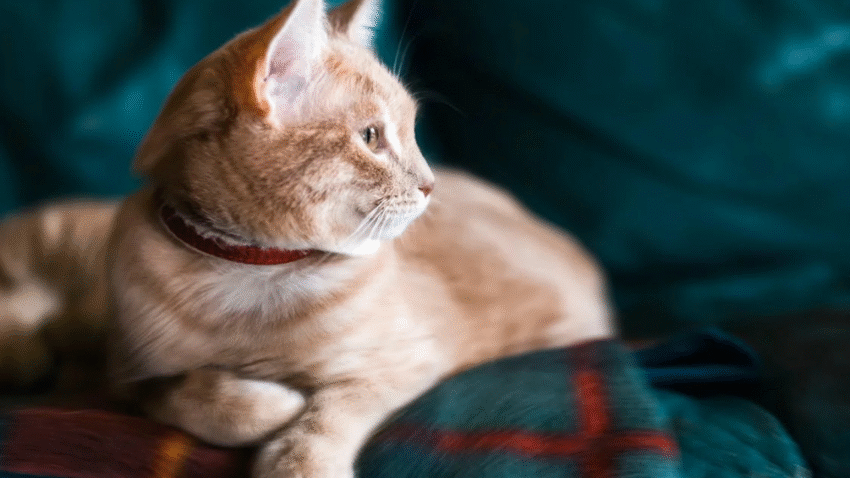Introduction
Tired of cat hair everywhere or noticing your cat constantly scratching? Shedding and skin irritation are common feline concerns—but they don’t have to be constant. In this step-by-step guide, you’ll learn how to reduce shedding and skin irritation in cats using grooming, nutrition, and environmental care. A healthier coat means a happier cat—and a cleaner home.
Why Shedding and Skin Health Matter
While some shedding is completely normal, excessive hair loss or skin discomfort may point to deeper issues. Addressing these not only improves your cat’s comfort but also prevents:
- Bald patches or thinning fur
- Excess hairballs from grooming
- Secondary skin infections
- Excess dander that worsens allergies
Supporting healthy skin and coat is essential to your cat’s overall wellness, especially during seasonal changes or periods of stress.
Step-by-Step Guide to Reduce Shedding and Skin Irritation
Step 1: Brush Your Cat Regularly
- Brushing helps remove loose hair before it falls off and reduces the chance of tangles or matting.
- Short-haired cats benefit from brushing 2–3 times a week, while long-haired cats should be brushed daily.
- Use the right brush: a rubber curry brush for short coats, a slicker or deshedding tool for long-haired breeds.
Step 2: Feed a High-Quality Diet
- Nutrition directly affects skin and coat health. Choose a diet rich in omega-3 and omega-6 fatty acids to reduce inflammation and improve skin moisture.
- Look for ingredients like salmon, flaxseed, and chicken fat in your cat’s food.
- Ask your vet if a supplement (like fish oil) is appropriate for your cat’s condition.
Step 3: Hydrate From the Inside Out
- Dehydration contributes to dry, flaky skin and excessive shedding.
- Provide fresh water at all times and consider a cat water fountain to encourage drinking.
- Wet food can also boost hydration for cats who don’t drink much.
Step 4: Control Fleas and Parasites
- Flea bites and skin mites cause itching, redness, and hair loss.
- Use a vet-approved flea prevention treatment monthly—even for indoor cats.
- Regularly check your cat’s coat for signs of fleas, bites, or scabs.
Step 5: Bathe Occasionally (If Recommended)
- Most cats don’t need regular baths, but if shedding or irritation is severe, your vet may suggest hypoallergenic or medicated shampoo.
- Always use cat-specific products—human shampoos can worsen skin conditions.
- After bathing, rinse thoroughly and dry gently with a soft towel.
Step 6: Use a Humidifier at Home
- Dry indoor air, especially during winter, can dry out your cat’s skin.
- Use a humidifier to keep humidity levels between 30–50%, which benefits both your cat and your furniture.
Common Mistakes to Avoid
1. Brushing Too Infrequently
Skipping grooming sessions can lead to mats, increased shedding, and skin discomfort. Consistency is key.
2. Ignoring Signs of Allergies
Excessive licking, scratching, or red patches may indicate food or environmental allergies. Consult your vet if symptoms persist.
3. Using the Wrong Brush or Technique
Hard or sharp brushes can irritate the skin. Always use a brush suitable for your cat’s coat type, and avoid over-brushing sensitive areas.
4. Feeding Low-Quality Food
Cheap foods with fillers or artificial additives often lack nutrients needed for healthy skin. Invest in quality nutrition for better long-term results.
5. Assuming All Hair Loss is Normal
Sudden increases in shedding or bald spots can signal illness, stress, or parasites. Don’t dismiss drastic changes—get them checked by a vet.
Extra Tips & Recommendations
Tip 1: Wipe Down With Grooming Cloths
Cat-safe grooming wipes help remove loose fur and dirt between brushings, especially for cats that dislike grooming.
Tip 2: Provide Scratching Surfaces
Scratching posts and pads not only help keep claws healthy but can also stimulate natural skin oil production and promote circulation to the skin.
Tip 3: Reduce Stress
Stress can trigger excessive shedding or grooming. Create a calm environment with quiet spaces, hiding spots, and routine playtime.
Conclusion
Reducing shedding and skin irritation in cats comes down to a mix of grooming, nutrition, hydration, and environmental care. By establishing a consistent routine and staying observant, you’ll help your cat feel more comfortable and look their best—while keeping your home a little cleaner, too. If issues persist, a quick visit to the vet will rule out anything serious and help you find the right solution.
